Water Scarcity in Urban Areas: Sustainable Solutions for Growing Cities
Water scarcity refers to a situation whereby the water demand is higher than the available water sources. Urban areas can face water scarcity due to several factors, including:
- Population growth
As the cities develop, people will require more water. - Climate change
Certain natural disasters such as droughts and floods can intensify the situation of water shortage. - Inefficient water use
The urban areas consume more water than rural communities and their needs are served by general sources of centralized utilities. - Poor governance
Urban areas can face issues with sanitation, treatment of wastes from the drainage system, and long-term management. - Pollution
In cities, there are common water sources that would eventually result in a generation of public and environmental health disorders.
Understanding Water Scarcity
Water scarcity is a condition when a person does not have sufficient water for their necessities. It can also be physiological, for example, thirst and economic in that the available water supply is not safe.
- Natural causes: Water is not equitably distributed on the earth and much of it goes on being lost, polluted, or wasted.
- Human causes: The concept of a high degree of abstraction, pollution, and building of dams in the case of climatic changes are considered.
The mismatch between the demand and the supply of water in terms of space and time is also another reason why scarcity can occur.
Here are some factors that can contribute:
- Rapid urbanization
Urban demand for its water supply has tripled, increasing the current shortage in the urban service area. - Centralized water sources
Water resources that are reserved for the urban populations create a risk to life for the entire public as well as the local natives. - Urban development patterns
Urban development patterns can deprive the adjacent areas of their Waters.
Impact of Water Scarcity on Urban Life
Here are some of the consequences of water scarcity on urban communities:
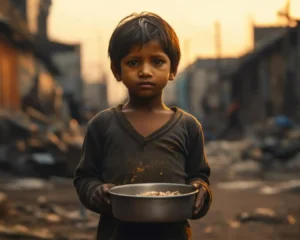
- Daily life
Water scarcity may lessen the availability of safe water for consumption and hygiene. This may cause hunger, sickness, and problems with sanitation.
Poor sanitation results in fatalities due to diarrheal diseases such as cholera and typhoid.
Women and girls may also spend a lot of their time carrying big water pots or walking long distances to get the necessary amount.
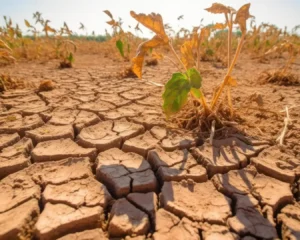
- Businesses
Water shortage leads to reduced crop production, loss of food security, and induces poverty among the farmer’s population.
It can also create problems in industrial production, reduce energy generation, and increase the price of water supply as well as treatment.
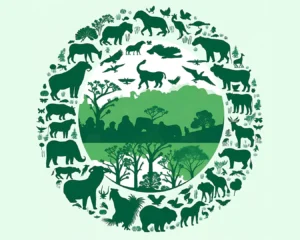
- Environment
Biodiversity loss is caused by water scarcity.
As water is important in urban areas, we should also focus on the hunger crisis. Let’s read about it here: Amid Global Hunger Crisis, World Food Day 2023 Spotlights Water’s Vital Role
Causes of Water Scarcity
Water scarcity is the long-term mismatch between the demand and availability of water including:
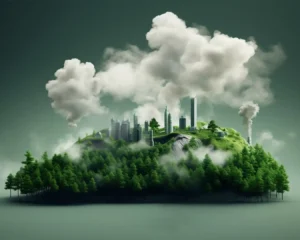
- Climate change
Increased climatic temperatures due to various human-related activities such as prolonged droughts and floods are likely to interfere with water availability leading to shortages and scarcity.
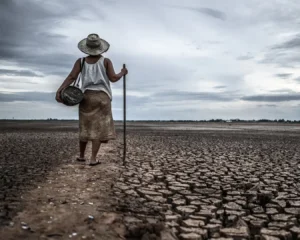
Droughts
Droughts refer to periods of dryness or times when rainfall is extremely low than what is normal. This may interrupt the water balance and lower the volume of water that accesses a system.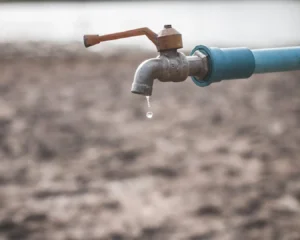
- Economic water scarcity
In such cases, this form of water scarcity arises due to the inefficiency of infrastructure and technology to pump out water from rivers and lakes.
This leads to people walking long distances when going out to collect fresh water.
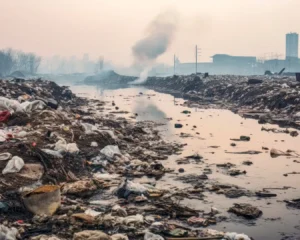
- Water pollution
The types of pollutants for water pollution include chemicals, oils, carcasses, and fecal matter.
Human beings are using more water than they need and in the process, the aquifers are being overused and reloading too slowly.
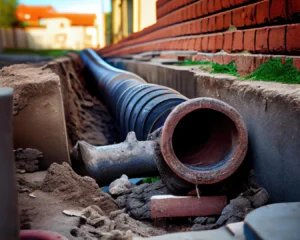
- Poor water management
Such a lack of investment might be between the cash outlay for investments in infrastructure to draw water from rivers, aquifers, or other sources of water.
Sustainable Solutions
It is widely known that increasing water scarcity constitutes one of the major global challenges.
In five years, more than two-thirds of the world’s population will dwell in regions of water stress.
The following are some macro-level sustainable and innovative solutions that can be applied to address water scarcity:
- One is increasing water conservation and efficiency. This can be achieved in many ways- fixing leaky faucets, installation of water-smart appliances, and use of drip irrigation.
- Water supply can also be increased by constructing new sources, including desalination centers and reclaimed wastewater.
- Apart from technological solutions, there are several policy-making and community initiatives to overcome the scarcity of water.
For instance, governments can adopt water pricing policies in their effort to conserve water while communities formulate water management plans that safeguard their local supply of water.
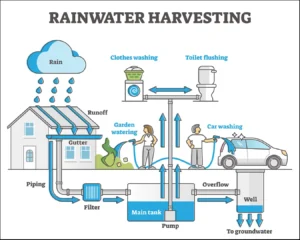
- Rainwater harvesting
If we talk about rainwater harvesting, it can be defined as the process of collecting and storing rainwater in a container so that it can be used again. For this to take place, one can use rain barrels, cisterns, and rooftop gardens.
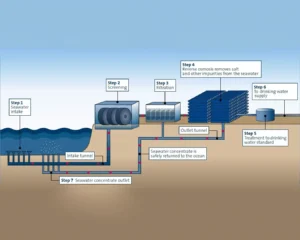
- Desalination
Although desalination may be the most recognizable application, it involves removing salt from seawater to make it suitable for drinking and irrigation.
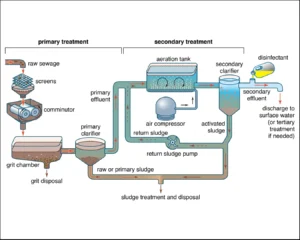
- Wastewater treatment
Wastewater treatment is undertaken to eliminate pollutants to release treated water for safe disposal or reuse on irrigation. - Water conservation policies
Policies such as water metering, building codes, and mass awareness promote conservation. - Community water management
In practice, they are programs that are developed and embraced by communities used to manage their water resources.
These are only a few sustainable and eco-friendly approaches that make sure that there is a provision of clean water. If we unite, we will manage water scarcity.
There are several different ways to solve the water problem for different communities. We have written an article about Solving the “Water Problem” For Different Communities Differently
Case Studies
Here are some examples of sustainable water management solutions in cities:
- The water management policies of Singapore are highly elaborate pools of Prices of water, rationing, compulsory rainwater harvesting, and making usable purified wastewater.
- Stormwater Capture Master Plan as intended for Los Angeles seeks to collect stormwater runoff so that it can be used in recharging ground water supplies.
- Official water efficiency programs for the city of New York include toilet rebates or free leak detection kits, as well as free water audits for large buildings.
- During water restriction policies and with such that 50 percent was curbed by the demand for water during an extreme drought in Cape Town.
- The sponge cities of China incorporate rainwater into their structure and thus reduce flood occurrence and store water for reuse.
It is important to note that cities continue to grow and as they do so, the situations they face concerning scarcity of supplies have become a public problem that needs addressing in the form of sustainable water management solutions.
Community Engagement
Community engagement is crucial for water conservation. Through educational programs and outreach, communities can:
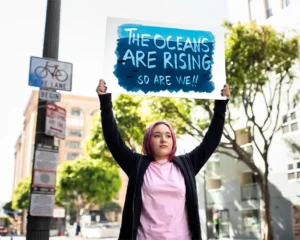
- Create awareness of the need for water conservation and how it can be done through a reduction in the consumption rate.
- Ensure to champion policies that protect the quality of water and legislation geared towards conservation.
- Resist water policies that seek to pollute the water resource
- Conduct water conservation programs by incorporating such practices as repairing leaks, changing fittings to those with low flow, and installing water-saving appliances.
- Promote and protect wetlands while advocating nature-based solutions.
The responsibility of managing water is shared by all persons. Those efforts of collective communities have a great contribution to preserving water sources that will be used for generations to come.
Government Policies
- Jal Shakti Abhiyan (2019) promotes water conservation and multiple activities such as rainwater harvesting, watershed development, etc.
- Atal Bhujal Yojana (2020–25) is intended to implement community participation for better management of groundwater.
- National Water Policy (2012) has also been guiding on issues such as water allocation priorities and priorities, demand management, and water pricing among others.
- The Pradhan Mantri KrishiSinchayee Yojana focuses on the delivery of water to the farm and the use of the optimal quantity of water for agriculture.
Other measures and plans address community involvement, water conservation, recycled water use, and multiple types of large-scale transfers.
The process of sustainable water management relies on cooperation by all stakeholders governments, communities, businesses, and individuals.
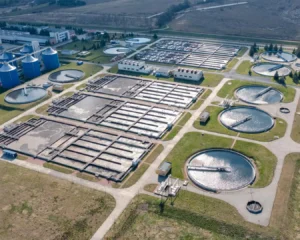
To Conclude
In conclusion, it is necessary to mention that sustainable solutions are indispensable in the matter of water scarcity which cities have been dealing with recently.
The key strategies are using water conservation, efficiency improvements, desalination, and wastewater reuse situations, as well as community participation in managing water.
Governments also have a significant role in this issue by using favorable policies, regulations, and investments for sustainable water supply.
Proactive and cooperative governance in cities can be utilized to foster resilience to water risks, with adequate and safe supply to meet the needs of growing populations.
Ready to make a positive impact in the world?
UPDEED is the place for you. Our free and open platform is filled with inspiring stories from individuals and organizations who are making a difference in their communities and beyond. Connect and collaborate with like-minded individuals from around the globe on UPDEED, and discover your own potential to create meaningful change. Join our community and make a difference.





